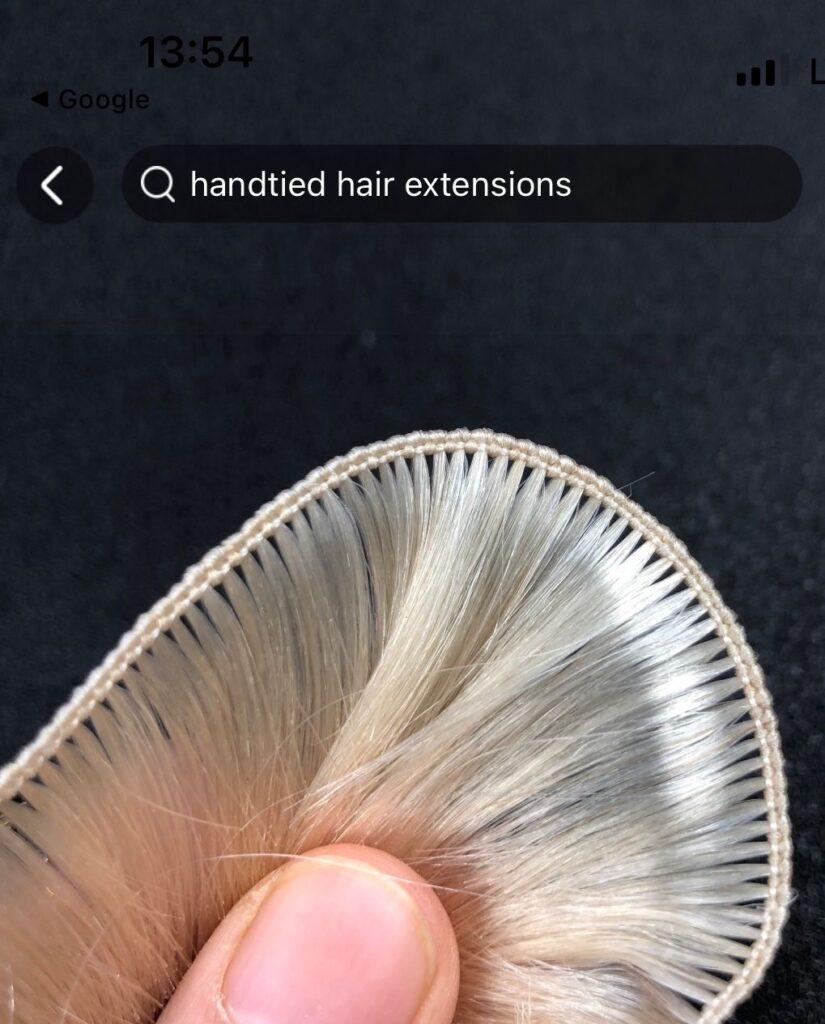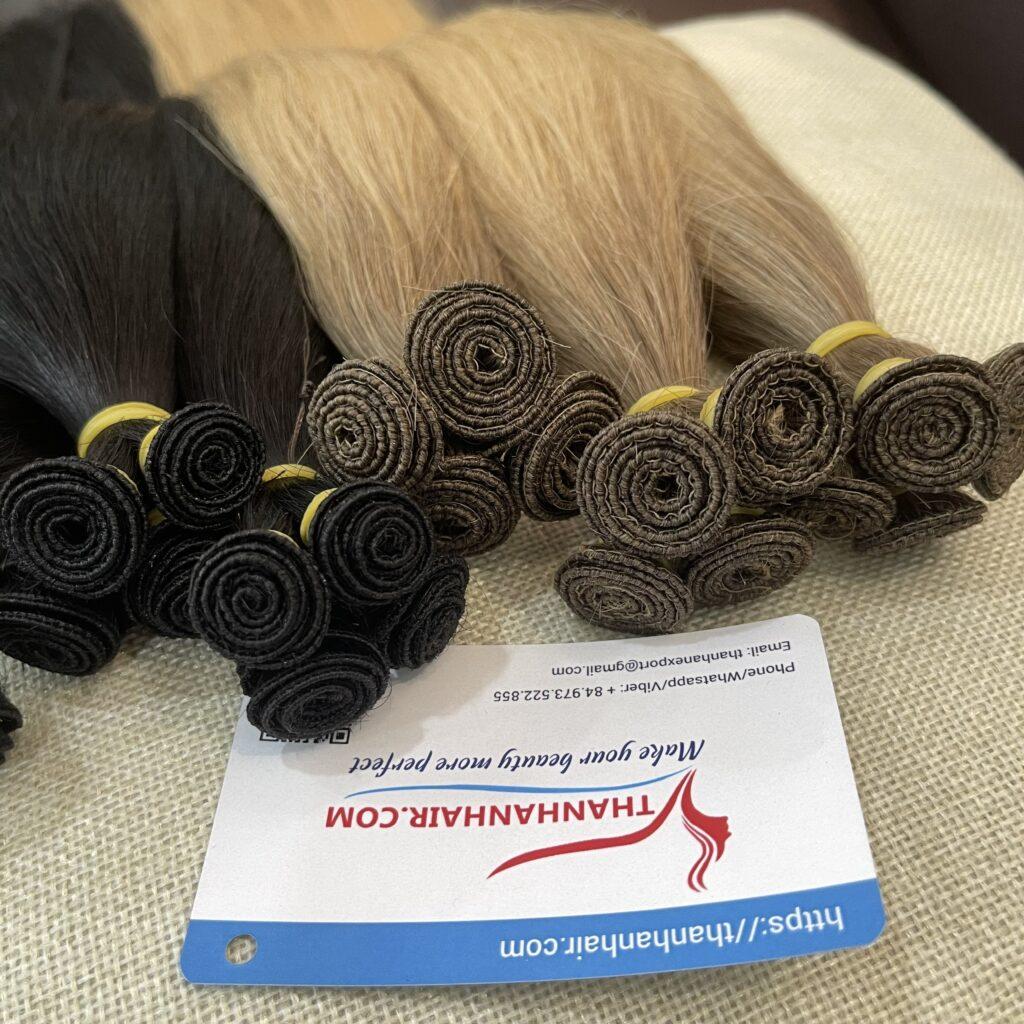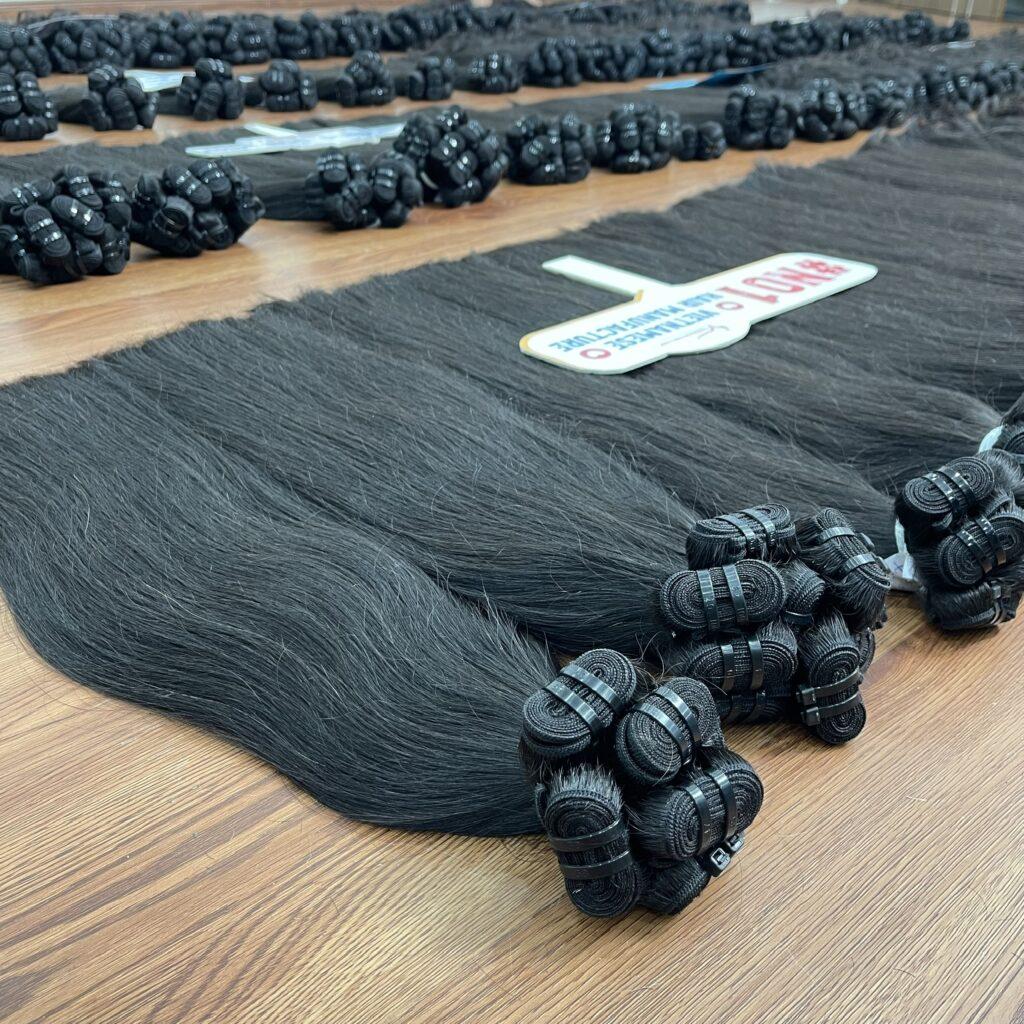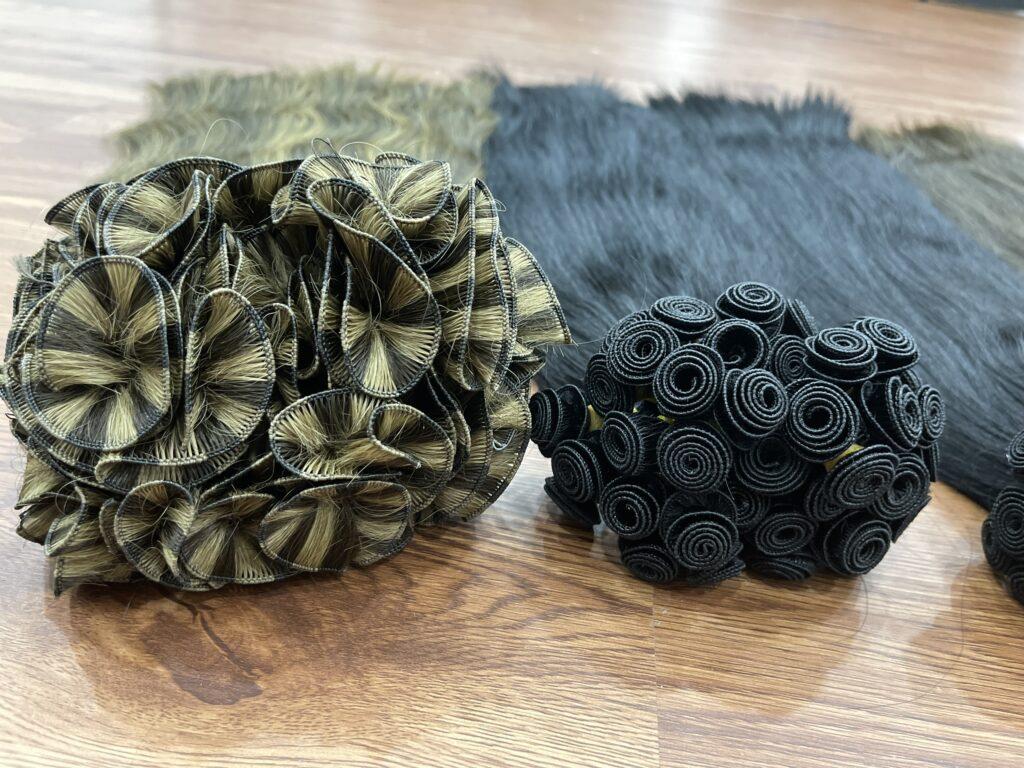Blog
Compare Machine Weft and Hand-Tied Hair Extensions
I. The Basics of Hair Extensions
What Are Hair Extensions?
Hair extensions are strands of human or synthetic hair that can be attached to natural hair to add length, volume, or color. They come in various forms, including clip-ins, tape-ins, micro-links, and wefts. Among these, weft extensions are particularly popular due to their versatility and ability to create a seamless look.
Types of Weft Extensions
Weft extensions can be broadly categorized into two types: hand-tied hair extensions and machine weft hair extensions. Each type has its own construction method, benefits, and drawbacks. Understanding these differences is essential for anyone considering hair extensions.
The Growing Popularity of Hair Extensions
The demand for hair extensions has surged over the years, driven by social media influencers, celebrities, and the desire for quick transformations. As a result, consumers are increasingly seeking high-quality extensions that not only look good but also feel natural. This quest for quality has led to a deeper exploration of the construction methods behind various types of extensions.
II. Hand-Tied Hair Extensions
Hand-tied hair extensions represent the epitome of craftsmanship and meticulous attention to detail. Unlike their machine-made counterparts, each strand of hair is carefully tied to a thin, delicate weft by skilled artisans using special tools. This process requires considerable time and skill, resulting in extensions that boast exceptional softness, flexibility, and a natural appearance.

- Construction of Hand-Tied Weft
At the heart of hand-tied extensions lies a delicate weft, constructed using thin threads meticulously woven through the hair strands. The process involves:
1.1 Strand Selection
High-quality, ethically sourced human hair is carefully chosen for its texture, length, and color consistency. This initial step is crucial as it sets the foundation for the overall quality of the extensions.
1.2 Weft Creation
A thin, soft thread is used to create a base for the weft, which serves as the foundation for the hair attachment. Artisans use specialized techniques to tie each strand of hair onto this base, ensuring that the weft remains lightweight and flexible. This careful construction allows the extensions to lay flat against the scalp, providing a seamless blend with natural hair.
1.3 Quality Control
Once the weft is created, it undergoes rigorous quality control checks. This includes inspecting the color, texture, and overall integrity of the extensions. Only those that meet the highest standards are packaged and made available for sale. This commitment to quality ensures that consumers receive extensions that not only look beautiful but also last longer.
- Advantages of Hand-Tied Extensions
Hand-tied extensions offer several advantages that make them a popular choice among hairstylists and clients alike.

2.1 Natural Appearance
One of the most significant benefits of hand-tied extensions is their natural appearance. The lightweight design and seamless blending capabilities allow for a more realistic look compared to other types of extensions. This makes them ideal for individuals looking to enhance their hair without drawing attention to the fact that they are wearing extensions.
2.2 Versatility
Hand-tied extensions can be styled just like natural hair. They can be curled, straightened, and colored, allowing users to experiment with different looks. Additionally, they can be installed in various ways, such as sew-in or beaded methods, providing flexibility in application techniques.
2.3 Comfort
Due to their lightweight nature, hand-tied extensions are generally more comfortable to wear than heavier options. They do not put excessive strain on the natural hair or scalp, making them suitable for long-term wear.
- Disadvantages of Hand-Tied Extensions
While hand-tied extensions have many advantages, there are also some drawbacks to consider.
3.1 Time-Consuming Installation
The installation process for hand-tied extensions can be time-consuming, often taking several hours to complete. This may not be ideal for individuals who are looking for a quick solution to enhance their hair.
3.2 Higher Cost
Due to the labor-intensive nature of their construction, hand-tied extensions tend to be more expensive than machine weft options. This higher price point may deter some potential buyers, especially those on a budget.
3.3 Maintenance Requirements
Hand-tied extensions require regular maintenance to keep them looking their best. This includes periodic tightening and reinstallation, which can add to the overall cost and time commitment associated with wearing these extensions.
III. Machine Weft Hair Extensions
Machine weft hair extensions are produced using industrial machines that sew hair strands onto a thicker, sturdier weft. This method allows for faster production times and lower costs, making machine weft extensions a popular choice for many consumers.
- Construction of Machine Weft Extensions

The construction of machine weft extensions involves several key steps:
1.2 Hair Selection
Similar to hand-tied extensions, high-quality human hair is selected for machine weft extensions. However, the sourcing process may vary, with some manufacturers opting for bulk hair that may not always meet the same ethical standards as hand-tied options.
1.2 Weft Creation
In this step, the hair strands are sewn together using a sewing machine. This process creates a thicker, more durable weft that can withstand daily wear and tear. While this method is efficient, it can result in a less flexible and bulkier extension compared to hand-tied options.
1.3 Quality Control
After the weft is created, it undergoes quality control checks to ensure that it meets industry standards. This includes inspecting the weft’s strength, color, and overall appearance. However, the quality control process may not be as rigorous as that of hand-tied extensions, leading to potential inconsistencies.
- Advantages of Machine Weft Extensions
Machine weft extensions come with their own set of advantages that appeal to a wide range of consumers.
2.1 Cost-Effective
One of the most significant benefits of machine weft extensions is their affordability. The mass production process allows for lower prices, making them accessible to a broader audience. This is particularly appealing for individuals who want to experiment with hair extensions without breaking the bank.
2.2 Quick Installation
Machine weft extensions can be installed relatively quickly compared to hand-tied options. The installation process typically takes less time, making them a convenient choice for individuals with busy schedules.
2.3 Durability
The sturdy construction of machine weft extensions makes them highly durable. They can withstand daily styling and wear, making them suitable for individuals who lead active lifestyles.
- Disadvantages of Machine Weft Extensions

Despite their advantages, machine weft extensions also have some drawbacks that should be considered.
3.1 Bulkiness
The thicker weft of machine extensions can create a bulkier appearance, especially when applied to fine or thin hair. This may result in a less natural look, particularly if the extensions are not blended well with the natural hair.
3.2 Limited Styling Options
While machine weft extensions can be styled, they may not hold curls or styles as effectively as hand-tied options. This limitation can be frustrating for individuals who enjoy experimenting with different hairstyles.
3.3 Potential Damage to Natural Hair
The heavier weight of machine weft extensions can put additional strain on the natural hair and scalp. If not applied correctly, they may lead to breakage or traction alopecia over time.
IV. Comparing Hand-Tied and Machine Weft Extensions
When deciding between hand-tied and machine weft extensions, it’s essential to weigh the pros and cons of each option. Here, we will compare the two based on several key factors.

- Construction Method
As previously discussed, hand-tied extensions are crafted with meticulous care by skilled artisans, while machine weft extensions are produced using industrial machinery. This fundamental difference in construction leads to variations in quality, appearance, and durability.
- Appearance
Hand-tied extensions are known for their natural appearance and seamless blending capabilities. In contrast, machine weft extensions may appear bulkier and less natural, particularly if not installed correctly. For individuals prioritizing a realistic look, hand-tied extensions may be the better choice.
- Comfort
Hand-tied extensions are generally lighter and more comfortable to wear, making them suitable for long-term use. Machine weft extensions, while durable, can be heavier and may cause discomfort if not applied properly.
- Cost
Cost is a significant factor for many consumers. Machine weft extensions are typically more affordable due to their mass production, while hand-tied options come with a higher price tag due to the labor-intensive process involved in their creation.
- Maintenance
Both types of extensions require maintenance, but hand-tied extensions may necessitate more frequent upkeep due to their delicate nature. Machine weft extensions, while easier to install, may require careful handling to prevent damage.
- Versatility
Hand-tied extensions offer greater versatility in terms of styling and application methods. They can be curled, straightened, and colored, allowing for a wide range of looks. Machine weft extensions, while still versatile, may not hold styles as effectively and may limit creative possibilities.
Choosing between hand-tied and machine weft hair extensions ultimately depends on individual preferences, budget, and desired outcomes. Hand-tied extensions offer a luxurious, natural look with superior comfort and versatility, making them ideal for those willing to invest in quality. On the other hand, machine weft extensions provide a cost-effective alternative that is quick to install and durable, appealing to those seeking a more budget-friendly option.
Regardless of the choice made, understanding the construction and characteristics of each type of extension is essential for achieving the desired results. By weighing the pros and cons of hand-tied vs. machine weft extensions, consumers can make informed decisions that align with their beauty goals and lifestyle needs.
>> Contact us:
Whatsapp: +973 522 855
Website: thanhanhair.com
Instagram: thanhanhair
